di Marta Lock
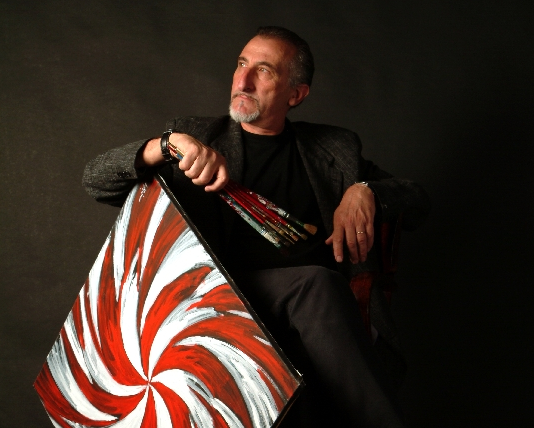
Abruzzese di origine ma da anni residente nel Conero, a un passo da Ancona, Enio Di Stefano si divide tra la sua professione di geometra, per cui il calcolo e la precisione costituiscono l’essenza stessa del suo lavoro, e la sua inclinazione artistica, che lo coinvolge dal punto di vista emozionale ma anche metafisico proprio in virtù della connessione con la natura e della riflessione che ne deriva. Appassionato di filosofia greca cerca di mescolare l’approccio razionale e logico che non può prescindere da un processo di conoscenza basato su evidenze, su cause ed effetti, su tutto ciò che ha una ripercussione e una conseguenza nell’esistenza stessa, procedimento tipico del pensiero logico, e l’armonia tra reale e sentito che invece appartiene alla sfera artistica, quell’universo in cui la ragione lascia lo spazio all’immediatezza di tutto ciò che viene percepito. Tuttavia le opere di Enio Di Stefano appaiono come una terra di mezzo tra ragione ed emozione perché se da un lato non può fare a meno di dar voce alla natura, quella stessa dimensione in cui ha scelto di vivere la sua vita, dall’altra però ognuna delle sue tele diventa un modo per esplorare la dimensione umana all’interno di un mondo contemporaneo complesso, individualista e spesso orientato solo all’autorealizzazione del singolo, poco importa se per raggiungerla sia necessario prevaricare qualcun altro, e per questo destinato a inaridirsi e a restare solo. Proprio la solitudine, l’alienazione, è il fulcro della ricerca pittorica dell’artista, le cui opere sono sempre prive della presenza umana per sottolineare quanto in realtà la natura sussista a prescindere dalla nostra azione spesso distruttiva e di quanto, al contrario, sia possibile fare un passo indietro per cercare quel contatto primordiale spesso dimenticato e perduto, attraverso il quale è possibile ritrovare la vera essenza, quella che ha bisogno della semplicità per manifestarsi e rinascere. Il suo stile spazia dal figurativo attraverso cui rappresenta paesaggi intensi osservati da lontano, quasi come se la sua stessa presenza potesse disturbare l’equilibrio perfetto di luoghi incontaminati, al Metafisico in cui fuoriesce la sua attenzione all’essere umano inteso come comunità, come gruppo di individui che entrano in contatto senza conoscersi o tendendo verso un obiettivo comune ma dimenticando di unirsi per lottare insieme, e infine al Concettuale di cui sono protagonisti sassi colorati, ciottoli, a volte in disordine altre invece racchiusi all’interno di reticoli apparentemente rassicuranti. L’approccio figurativo non distoglie dalla profondità del messaggio attraverso il quale Enio Di Stefano induce l’osservatore a meditare sul significato più profondo delle immagini, a interrogarsi su ciò che quanto rappresentato intende realmente raccontare, accogliendo così la presenza della metafora come stimolo verso un’introspezione non solo del sé in qualità di singolo bensì appartenente a una società che troppo frequentemente dimentica di osservarsi dal di fuori e di conoscersi più profondamente. L’opera Uomini
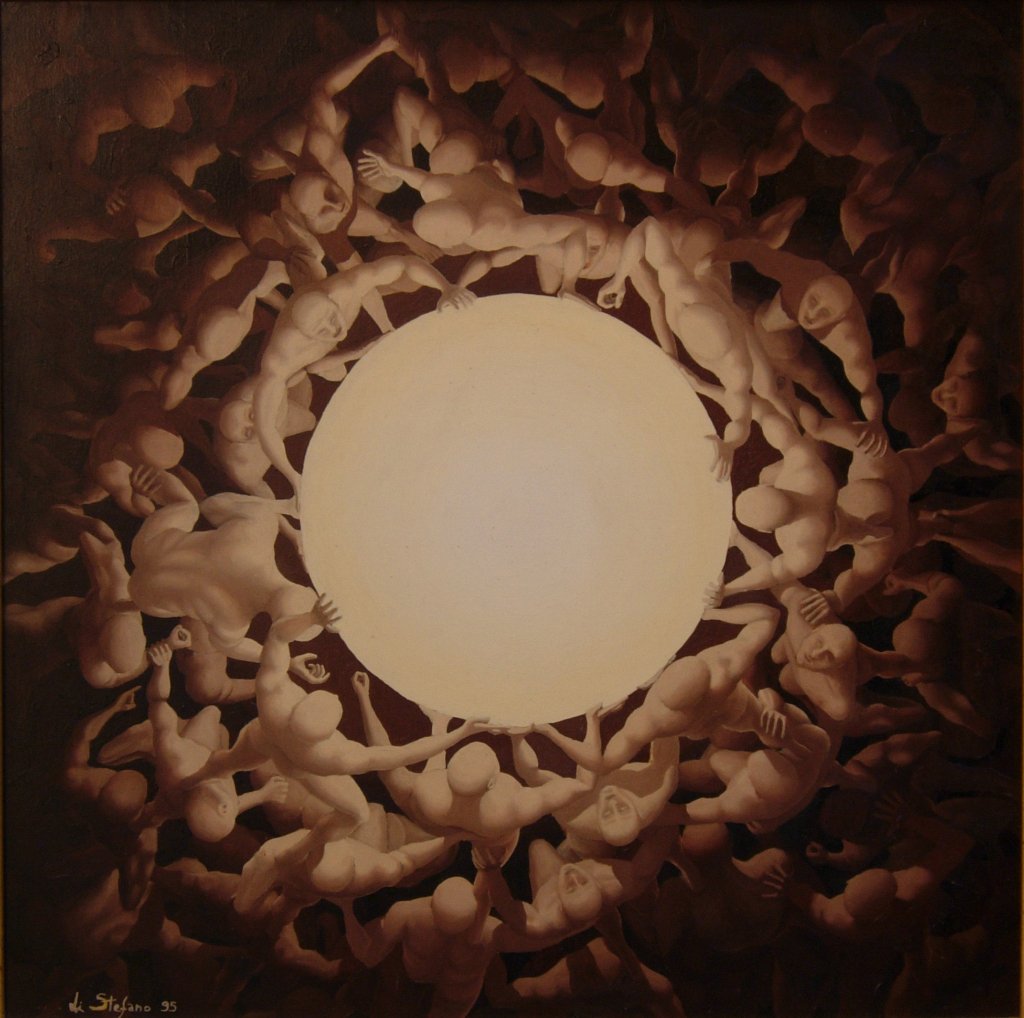
Uomini
appartiene al lato più Surrealista Metafisico dell’artista, in cui gli uomini si sovrappongono per sollevare la sfera di luce centrale che rappresenta la conosce, tutto ciò che l’essere umano ha appreso e realizzato nella sua vita; lo sforzo per sollevarla è il medesimo che l’uomo mette in campo per trovare il contatto con il Divino. La tela Casualità
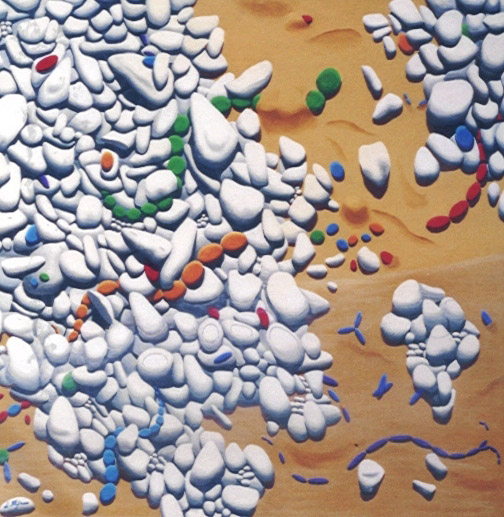
invece rientra nella produzione più Concettuale laddove i ciottoli, tutti bianchi, rappresentano la moltitudine, l’uniformità in mezzo a cui emergono le poche differenze, le poche voci dissonanti che Enio Di Stefano racconta attraverso il colore; ecco dunque che l’ordine viene sovvertito dal sopraggiungere causale di quelle personalità diverse, quelle attraverso cui è possibile dare avvio a un meccanismo di ascolto e di azioni differenti in virtù delle quali tutto può essere diverso da come sarebbe stato senza la loro presenza. Dunque causa ed effetto, riflessione e analisi della società contemporanea, capacità di apprendere dalla natura insegnamenti ormai dimenticati sono i tratti distintivi di Enio Di Stefano che ora andremo a conoscere meglio attraverso questa intervista.
Enio, ci racconta cosa l’ha spinta a passare da una professione schematica e basata sui calcoli qual è quella di geometra, alla espressione artistica che ormai occupa un posto prioritario nella sua vita? Ho sempre disegnato e dipinto fin da piccolo, ma i percorsi della mia vita sono stati altri lontani da quelli artistici, però ho sempre mantenuto accesa la mia vena creativa, ho coltivato la mia passione e il mio sogno; ora che ho più tempo da dedicargli l’arte è diventata prioritaria, mi concedo di lasciarmi trasportare dalla contemplazione e dall’ispirazione.
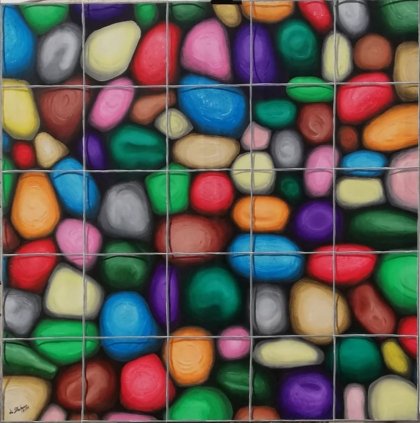
Lei ha scelto di lasciare la sua terra di origine per andare a vivere all’interno del Parco Nazionale del Conero, quanto ha contatto la vicinanza con la natura incontaminata nel suo modo di osservare e di riflettere sull’uomo contemporaneo?
In realtàsono nato in un paese di montagna nel Parco Regionale Velino-Sirente a 1434 metri di altezza, quindi nella natura incontaminata ho sempre vissuto. Abitare nel Parco Regionale del Conero nel comune di Ancona ha un grande vantaggio naturalistico perché pur trovandomi in montagna ho una splendida vista sul mare, facilmente raggiungibile. Questo amplifica la mia sensibilità artistica
verso la natura. L’uomo contemporaneo, votato alla tecnologia, ha perso molto l’attenzione verso il rapporto con la naturalezza ed è per questo che le mie opere tendono a fargli comprendere che è necessario far convivere la sua vita naturale con quella tecnologica per mantenere un equilibrio tra le due parti.
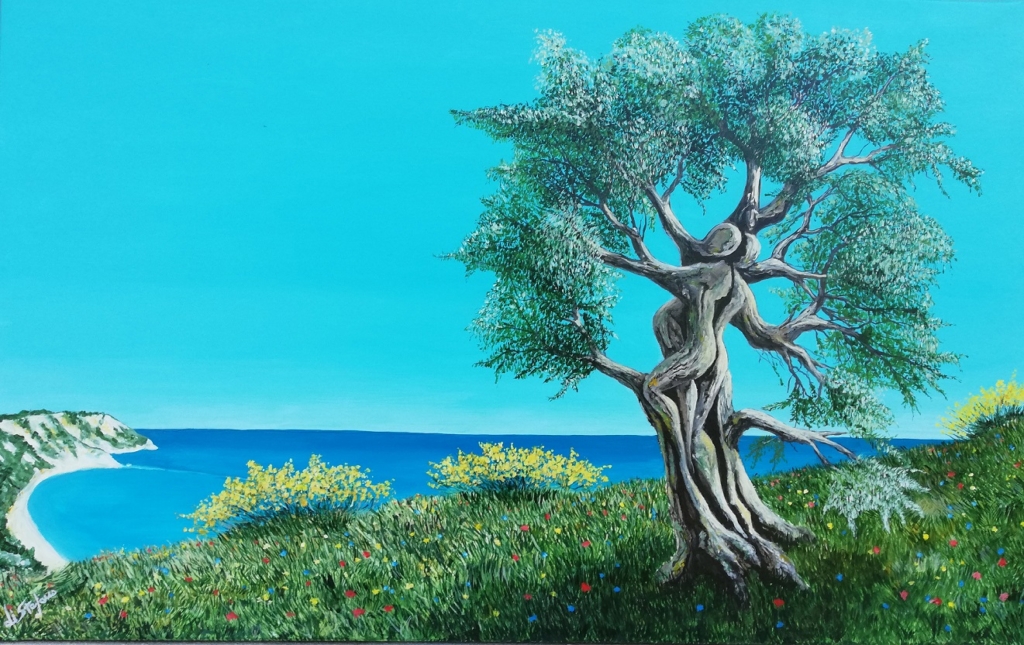
La decisione di scegliere con quale stile pittorico realizzare una nuova opera è dettato dall’impulso del momento, dall’argomento che desidera comunicare oppure è casuale e dettato dall’istinto pittorico del frangente in cui inizia a dipingere?
Lo stile pittorico è determinato dal tema che propongo nell’opera, io do molta più importanza al tema che allo stile, perché per me ciò che conta più di ogni altra cosa è comunicare i miei pensieri e le emozioni.
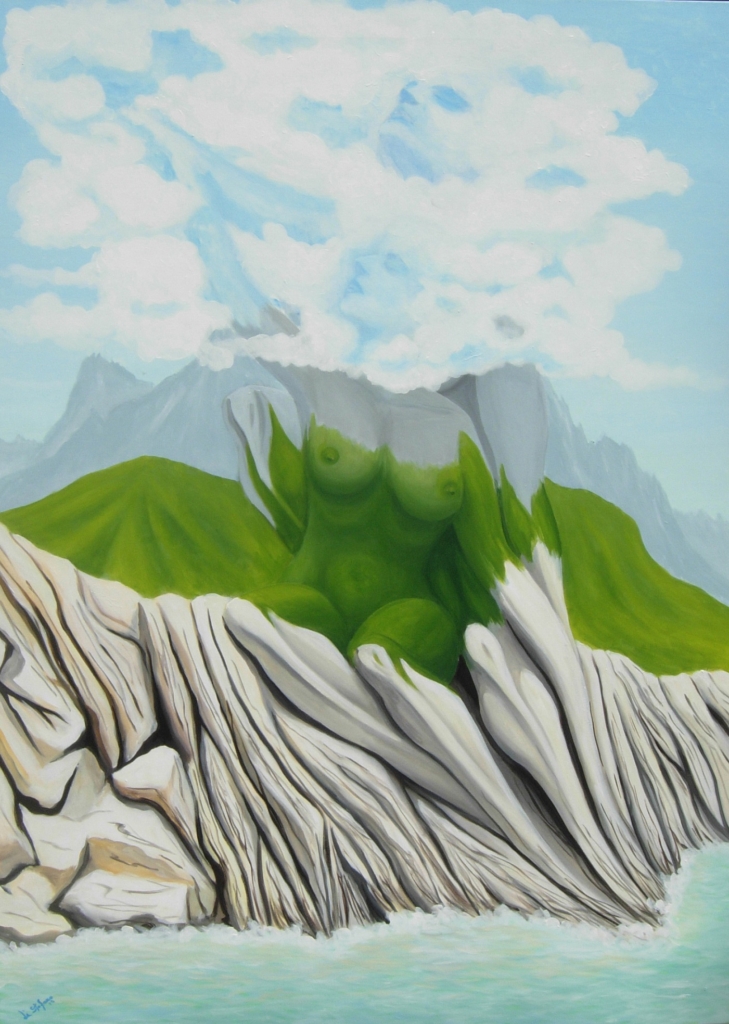
Ci sono maestri del passato a cui si sente vicino per stile e per intento espressivo, o che l’hanno ispirata nel dar vita al suo personale linguaggio pittorico?
Direi moltissimi ma tra i principali non posso fare a meno di citare Caravaggio, Michelangelo, Van Gogh, Dalì, De Chirico
Lei è stato inserito nell’edizione 2021 del prestigioso Atlante dell’Arte Contemporanea De Agostini, quanto è stato importante per lei questo traguardo? Quali sono i suoi prossimi progetti?
Certo per un artista è sempre molto importate essere inserito in un prestigioso Atlante dell’arte contemporanea. In questo momento sto realizzando nuove opere per una personale nell’anno 2022 in una favolosa città italiana. E sto pubblicizzando molto le mie opere su tutti i miei social, Facebook, Instagram, Telegram, e sul mio sito web, e sono presente in molte gallerie online.
ENIO DI STEFANO-CONTATTI
Email: distefanoenio@gmail.com
Sito web: www.distefanoenio.com
Facebook: https://www.facebook.com/eniodistefano
Instagram: https://www.instagram.com/distefanoenio53/
Marta Lock’s interviews:
Enio Di Stefano, halfway between geometric calculations and philosophical listening to nature interpreted through art
Born in Abruzzo but for years resident in the Conero area, just a stone’s throw from Ancona, Enio Di Stefano divides his time between his profession as a surveyor, for which calculation and precision are the very essence of his work, and the artistic mood, that involves him emotionally but also metaphysically precisely because of his connection with nature and the reflection that derives from it. Passionate about Greek philosophy, he tries to mix the rational and logical approach that cannot disregard a process of knowledge based on evidence, on causes and effects, on everything that has a repercussion and a consequence in existence itself, a procedure typical of logical thought, and the harmony between the real and the felt that instead belongs to the artistic sphere, that universe in which reason gives way to the immediacy of everything that is perceived. However, Enio Di Stefano’s artworks appear to be a middle ground between reason and emotion, because if on the one hand he cannot help but give voice to nature, the very dimension in which he has chosen to live his life, on the other hand each of his canvases becomes a way of exploring the human
dimension within a complex contemporary world, individualistic and often oriented only towards the self-fulfilment of the individual, no matter whether in order to achieve this it is necessary to prevaricate someone else, and for this reason destined to dry up and remain alone. Loneliness and alienation are at the heart of the artist’s pictorial research, whose artworks are always devoid of human presence to emphasise how nature actually exists regardless of our often destructive actions and how, on the contrary, it is possible to take a step backwards in search of that primordial contact that is often forgotten and lost, through which it is possible to rediscover the true essence, that which needs simplicity to manifest itself and be reborn. His style ranges from the figurative, through which he depicts intense landscapes observed from afar, almost as if his very presence could disturb the perfect balance of uncontaminated places, to the Metaphysical, in which his attention to the human being, intended as a community, emerges, as a group of individuals who come into contact without knowing each other or striving towards a common goal but forgetting to unite in order to fight together, and finally to the Conceptual in which coloured stones and pebbles are the protagonists, sometimes in disorder and sometimes enclosed within apparently reassuring grids. The figurative approach does not distract from the depth of the message through which Enio Di Stefano induces the observer to meditate on the deepest meaning of the images, to question himself on what is represented is really
meant to tell, thus accepting the presence of metaphor as a stimulus towards an introspection not only of the self as an individual but belonging to a society that too often forgets to observe itself from the outside and to know itself more deeply. The painting Uomini (Men) belongs to the artist’s more Surrealist, metaphysical side, in which men overlap to lift the central sphere of light that represents knowledge, everything that the human being has learned and achieved in his life; the effort to lift it is the same effort that man makes to find contact with the Divine. The canvas Casualità (Randomness), on the other hand, is part of the more conceptual production, where the pebbles, all white, represent the multitude, the uniformity in the midst of which emerge the few differences, the few dissonant voices that Enio Di Stefano recounts through colour; here, then, the order is subverted by the causal arrival of those different personalities, those through which it is possible to initiate a mechanism of listening and different actions by virtue of which everything can be different from what it would have been without their presence. So cause and effect, reflection and analysis of contemporary society, and the ability to learn from nature what has now been forgotten are the distinctive traits of Enio Di Stefano, whom we will now get to know better through this interview.
Enio, can you tell us what prompted you to switch from the schematic, calculation-based profession of surveyor to the artistic expression that now occupies a priority place in your life?
I have always drawn and painted since I was a child, but my life’s paths have been different from artistic ones, even if I have always kept my creative vein alive, I have cultivated my passion and my dream; now that I have more time to devote to it, art has become a priority, I allow myself to be carried away by contemplation and inspiration.
You chose to leave your homeland to live in the Conero National Park, how much has this closeness to unspoilt nature influenced your way of observing and reflecting on contemporary man?
Actually, I was born in a mountain village in the Velino-Sirente Regional Park at an altitude of 1434 metres, so I have always lived in unspoilt nature. Inhabiting in the Conero Regional Park in the municipality of Ancona has a great naturalistic advantage because even though I am in the mountains I have a splendid view of the sea, which is easy to reach. This amplifies my artistic sensitivity towards nature. Contemporary man, who is devoted to technology, has lost a lot of attention to his relationship with nature and that is why my artworks tend to make him understand
that it is necessary to make his natural life coexist with the technological one in order to maintain a balance between the two.
Is the decision to choose which painting style to use for a new work dictated by the impulse of the moment, by the subject matter you wish to communicate, or is it random and dictated by the pictorial instinct of the moment you start painting?
The painting style is determined by the theme I propose in the painting, I give much more importance to the theme than to the style, because for me what counts more than anything else is communicating my thoughts and emotions.
Are there any masters from the past who you feel close to in terms of style and expressive intent, or who have inspired you to create your personal pictorial language?
I would say very many, but among the main ones I cannot help but mention Caravaggio, Michelangelo, Van Gogh, Dali, De Chirico…
You have been included in the 2021 edition of the prestigious De Agostini Atlas of Contemporary Art, how important was this achievement for you? What are your next projects?
Of course it is always very important for an artist to be included in a prestigious Atlas of Contemporary Art. Right now, I am creating new artworks for a solo exhibition in the year 2022 in a fabulous Italian city. And I am advertising my works a lot on all my social media, Facebook, Instagram, Telegram, and on my website, and I am present in many online galleries.
